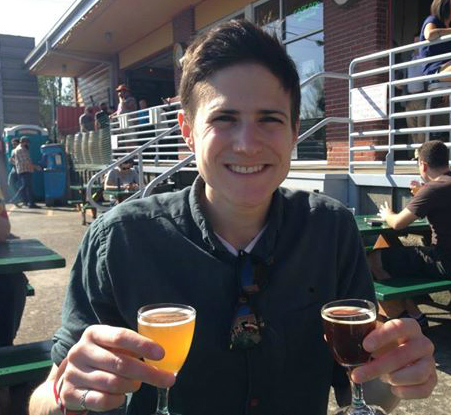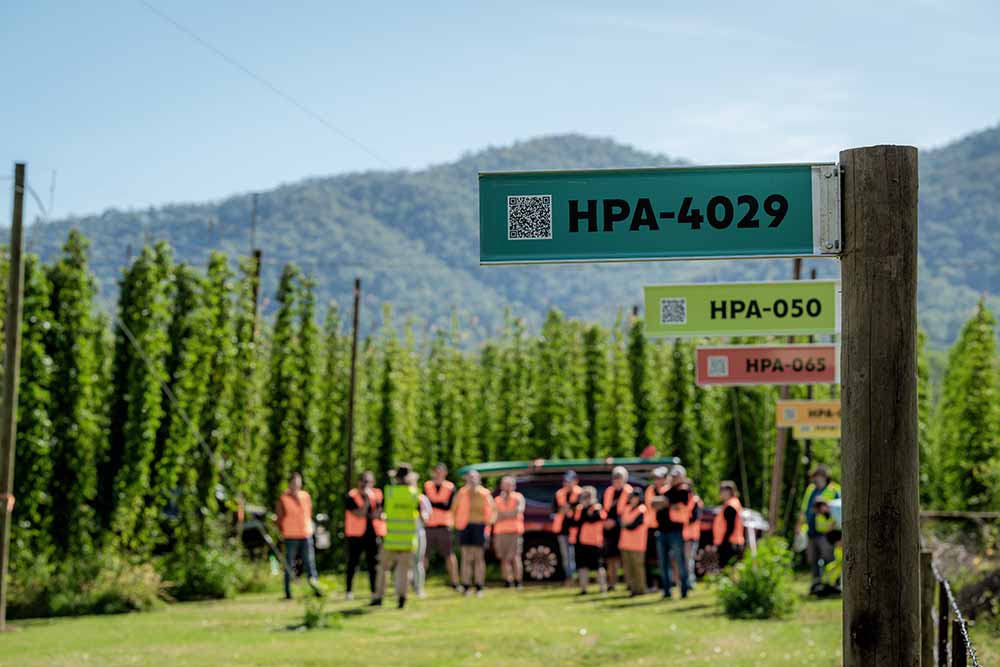Shop
A Liquid Leap: The Next Frontier for HPA’s Galaxy®, Eclipse®, and Vic Secret
In a galaxy far, far away.
Like This, Read That:
Crushing Cones and Crafting Connections: How HPA and HAAS Are Shaping the Future of Hops
Hop Central, HPA’s New State-of-the-Art Pelleting Facility, Goes Online for its First Harvest
48 Hours Drinking and Eating in Sydney, Australia
This article has been written in partnership with our friends at HPA and HAAS.
For more than four decades, Hop Products Australia (HPA) has been pushing the boundaries of what hops can do—both in the field and in the brewhouse. In 2008, HPA boldly moved its entire crop from alpha hops, prized for bittering, to flavor-forward varieties. It wasn’t just a shift in strategy; it was a bet on the future of brewing. Through a metamorphic transformation driven by a unique triploid breeding strategy, HPA’s gamble paid off, giving the world standout hops like Galaxy®, Eclipse®, Vic Secret™, Ella™, and Enigma®, among others—all of which have become go-to favorites for brewers chasing big, bold flavors.
But innovation at HPA hasn’t stopped there.
As part of the global BarthHaas group—including HAAS, North America’s leading hop supplier—HPA is now taking its varieties into a new frontier: liquid hop products.
By going beyond pellets and cones to create flowable, cost-effective, and efficient formats, HPA and its sister companies BarthHaas and HAAS are helping brewers achieve intense hop character with less waste, more consistency, and greater flexibility.
With products like Spectrum® and Incognito® already making a splash—and new ones like Euphorics™ on the horizon—it’s clear that liquid hops aren’t just a trend; they’re a smart, sustainable evolution in hops.
As brewers continue experimenting and pushing beer in new directions, HPA and HAAS’ commitment to flavor, efficiency, and creativity ensures they’re again leading the charge in shaping what’s next for hops.
A History of Innovation
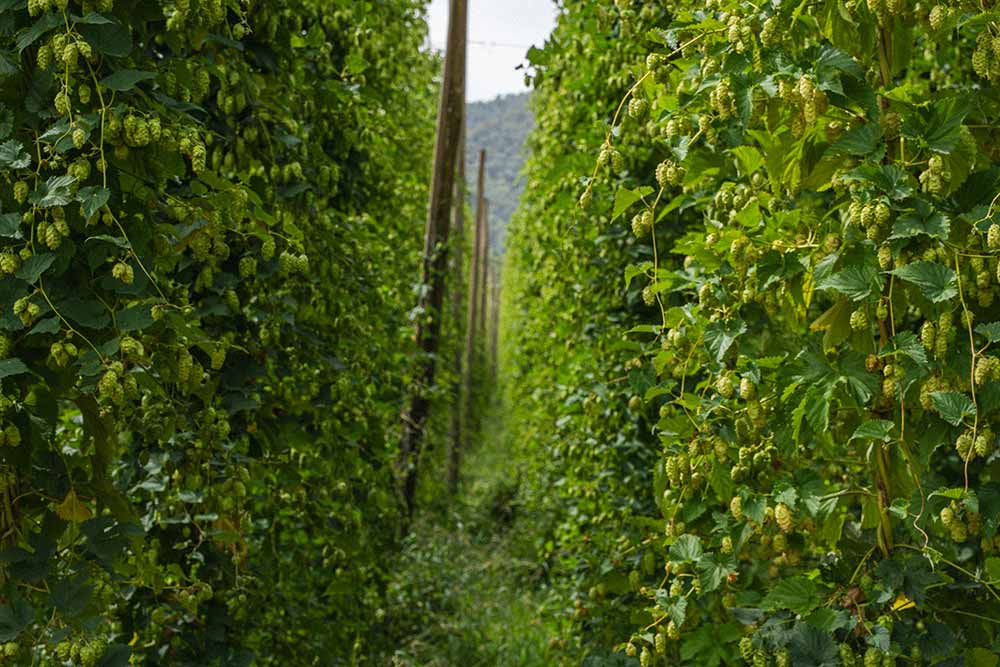
Photography courtesy of Magic Muncie, Social Media Manager, Hop Culture
For over 200 years, since hops were first planted in Australia in 1803, bittering has been the focus.
Take Pride of Ringwood, for example—the highest-alpha hop in the world when it launched in the 1960s. That hop became the mainstay of Australian hop growing for nearly fifty years. Then came Super Pride, a 13.5 percent alpha hop released in the early 1990s. “We’ve got this lineage of strong releases,” points out HPA’s former Head of Sales and Marketing and newly appointed CEO, Owen Johnston.
But by the late 2000s, HPA—which accounted for ninety percent of Australia’s hop acreage—faced significant hurdles.
HPA Head of Agronomic Services Simon Whittock, who joined the company in 2007, explains that all of HPA’s contracts at the time were alpha-focused. “The business was really struggling,” he says. “The price was such that there was little or no margin in those contracts, and the future volumes were looking wobbly. So we had to find another way.”
After so long prioritizing bittering hops, the market had changed. Flavor-forward hops like Nelson Sauvin, Citra, and Amarillo were making waves. “People started to see that hops could do something other than bittering and European aroma—and make a profit for a brewery,” says Whittock. “The market was primed.”
Whittock, who holds a PhD in quantitative genetics and previously worked in forestry breeding, joined HPA to run its breeding program.
At the time, Whittock says they mainly targeted high-yield alpha varieties for bittering. But he also inherited something different—a flavor-forward hop called Galaxy.
Now one of the most recognized Australian hops worldwide, Galaxy was first created by HPA in 1994 and hit the commercial market in 2009.
A cross of high-alpha Australian and Perle parents, Galaxy changed everything for HPA.
Amid the transition, Galaxy became the star.
But it wasn’t alone.
When Whittock took over the breeding program, he had twenty hectares of idled land filled with trial material.
“My first major job was to go through all that and figure out what we had,” says Whittock. “Do we kill it? Do we keep it? Do we cycle it back into a selection system? How do we move forward?”
For the next three or four years, Whittock sent experimental hops out to brewers. “Of the top three or four choices,” he says, “one became Eclipse; one became Vic Secret.”
Through its breeding program, HPA began establishing itself as a leader in flavor-forward, innovative hops.
And brewers around the world were paying attention.
A Triple Threat
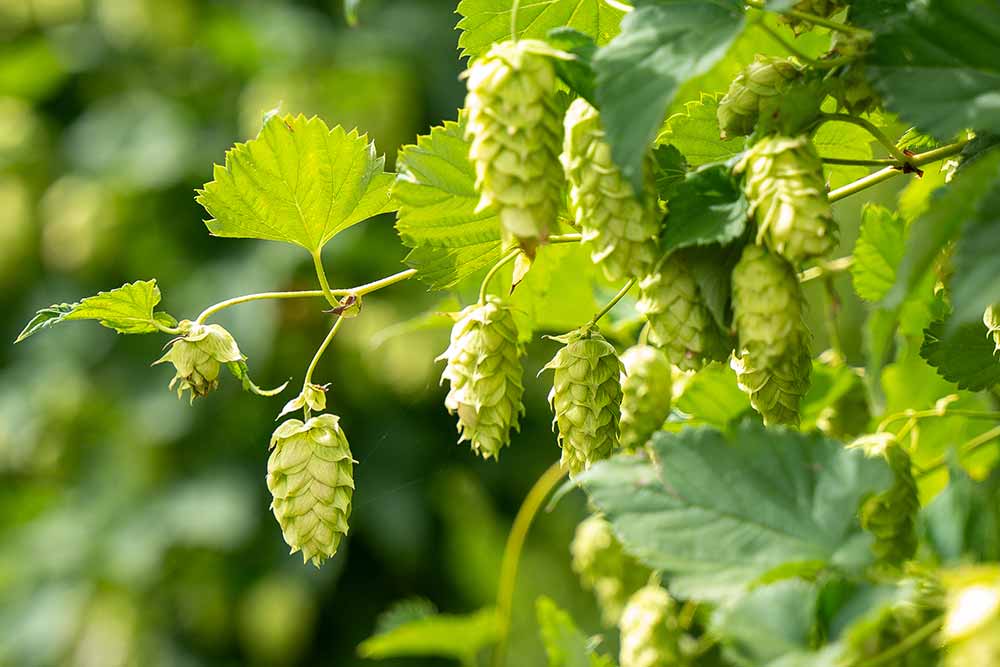
Photography courtesy of Magic Muncie, Social Media Manager, Hop Culture
“Our breeding program is pretty phenomenal,” admits Johnston. “It’s pretty rare in the world.” One thing that has always set HPA’s hops apart is its triploid breeding strategy.
As Whittock explains, to breed a hop, you usually take one chromosome set from the “mom” and one from the “dad,” combining them to create a diploid embryo. HPA’s polyploid technique takes two sets of chromosomes from the mom and one from the dad to form a triploid.
With this approach, “You get more flowering plants, and you get more fruit production per plant,” says Whittock, noting Topaz as a prime example. “It has a really high standing yield potential. You’ve got to grow it just right, but what it can produce is pretty remarkable.”
Over the last ten years, Whittock says nearly every hop they’ve selected for commercialization has been a triploid, while “we’ve had diploid plants in the selection program that haven’t made it through.”
While he doesn’t have a measured explanation, he guesses that triploids influence everything from plant structure to pickability, yield, and possibly genetics that “support the accumulation of the flavor-active metabolites as well,” he says. “We’re talking about those really simple essential oil profiles.”
He adds, “I haven’t run the numbers, but I’m pretty sure if I did, there’d be a strong bias toward flavor-positive attributes in the polyploids we screen.”
HPA is one of the few hop companies in the world using a triploid breeding strategy because it’s technically challenging. “It’s a really specific skill set that not many people around the world actually have,” says Whittock.
Once again, the gamble paid off.
Just look at the triploid-bred hops HPA has introduced since the turn of the century. We all know Galaxy, but varieties like Eclipse and Vic Secret have also impressed.
In fact, Whittock speculates that if you swapped the release dates for Eclipse and Galaxy, “I reckon Eclipse would have caused more trouble,” he says. “Eclipse’s mandarin [orange] character is just so reliable in beer. And that’s a tough challenge, but I think it really stands up.”
If Johnston had to pick a favorite child, Eclipse would top the list. Though he admits it has an unfair advantage: “The first time I tasted Eclipse, it was memorable,” he says. “Eclipse, for me, is just a winner.”
Recently, HPA raised the innovation stakes again, bringing Galaxy, Eclipse, and Vic Secret into something entirely new.
Hops’ New Frontier
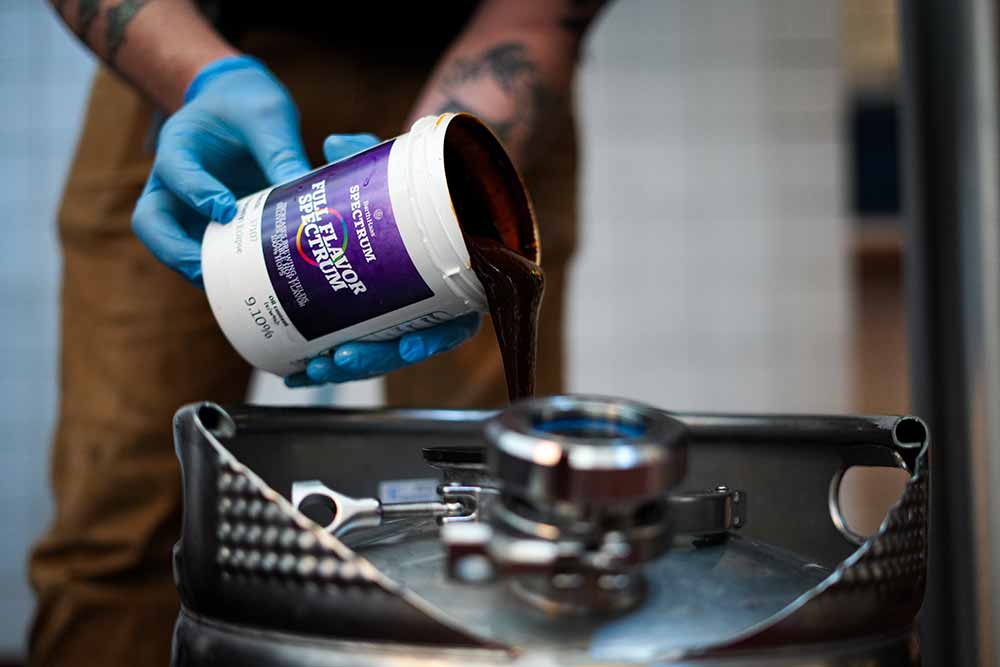
Photography courtesy of John I. Haas and HPA
While Galaxy, Eclipse, Vic Secret, and other Southern Hemisphere hops may be the new flavor frontier, HPA’s U.S. partner, HAAS, has been pioneering liquid hop products for the past seven years.
HAAS is no stranger to innovation, with its own track record of breeding world-famous hops through the Hop Breeding Company (HBC). Now it boasts a lineup of flavor-focused products supported by proprietary hops from HPA and HBC.
HPA Marketing Manager Grace Irwin notes that HPA intentionally skipped intermediate products like T45 or Lupomax® pellets, moving straight from T90 pellets to liquid products.
“Our hops are already so high in oils and alphas, which means brewers wouldn’t experience any significant benefits from enriched Aussie hop pellets,” she explains. “Naturally, the next step was to go straight to liquid products.”
Johnston agrees, emphasizing, “We don’t believe enriched Aussie hop pellets would actually deliver enough for the brewer to justify the cost.”
Liquid hop products, on the other hand, make far more sense.
For instance, Eclipse is available in Spectrum, a liquid product that replaces traditional T90 pellets in the cold-side dry-hopping process.
“The feedback we’ve gotten from Eclipse Spectrum is just awesome,” shares HAAS’s former Director and Manager of R&D and current VP of Technical Solutions, Brian Buffin. “It’s their favorite hop right now, especially in Spectrum.”
First released by BarthHaas on July 12, 2021, Spectrum has steadily entered the market.
Made from hop pellets without additives or solvents, Spectrum is a fully dispersible liquid hop product that delivers true-to-type hop flavor.
BarthHaas currently offers Spectrum in nine varieties, including three Australian hops: Galaxy, Eclipse, and Vic Secret.
Buffin notes that HAAS designs all its hop-derived liquid products with two goals in mind: “Flavor and efficiency have been our driving focus with everything we’ve developed,” says Buffin, a PhD chemist and professor who joined HAAS in 2019 to lead development of new products like Spectrum and Incognito.
Incognito, another flowable CO2 hop extract designed to replace dry hopping, was introduced by HAAS and BarthHaas to replicate hop flavor and aroma while reducing beer loss.
Currently available in eight U.S. hop varieties, Incognito will be available in an Australian hop soon.
Incognito started with Citra, Mosaic, and Ekuanot. “But ever since launch, we’ve been expanding the lineup,” shares Buffin. “The plan is to have Galaxy available in the not-too-distant future.”
Buffin explains that adding a new hop to Incognito isn’t a simple decision, but Galaxy was an obvious choice because it’s “such a hugely popular hop,” he says. “And it goes without saying we like using an HPA hop—it’s something that sets us apart. While they’ve created Incognito mimics, our competitors can’t do it with Galaxy.”
Not the Final Frontier—Just the Beginning
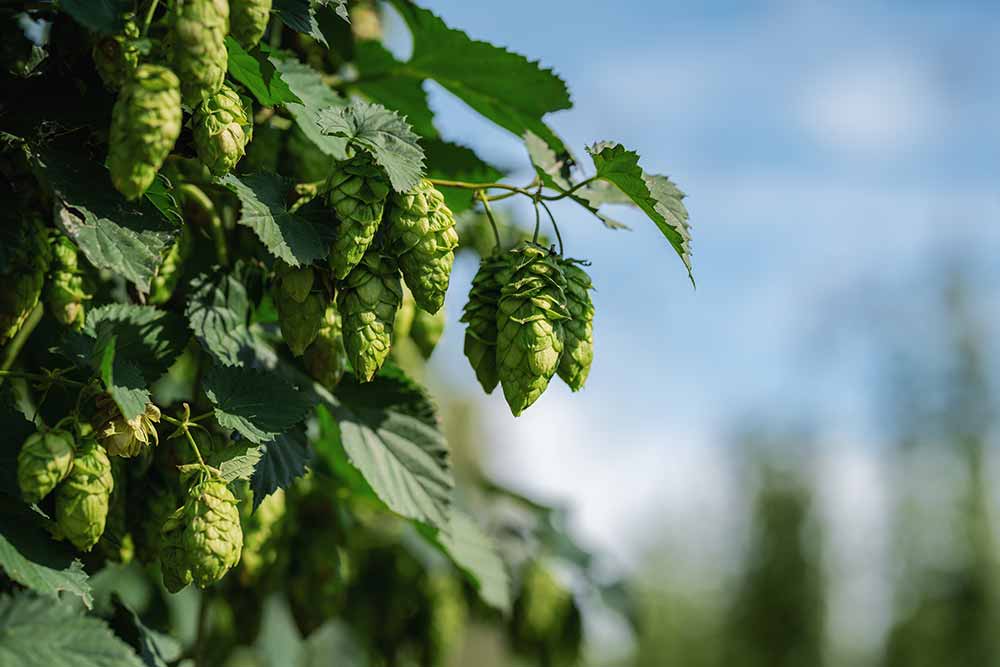
Photography courtesy of James Davidson
From pioneering Australia’s most iconic hop varieties to embracing cutting-edge liquid hop products, HPA has repeatedly proven that innovation is in its DNA. By shifting its focus from bittering to flavor, the company didn’t just adapt to a changing beer market—it helped shape it.
Galaxy, Eclipse, Vic Secret, and HPA’s other standout hops have become essential tools for brewers crafting flavorful, aromatic beers worldwide.
Now, with liquid hop products like Spectrum and Incognito, HPA and HAAS are giving brewers even more ways to get creative while improving efficiency and sustainability. These products don’t just deliver big flavor—they make brewing smarter, reducing waste and giving brewers flexibility in how they use hops.
As the craft beer world evolves, HPA and HAAS are ensuring hops stay at the heart of brewing innovation—whether it’s a juicy hazy with Galaxy, a West Coast IPA with Vic Secret Spectrum, or a crisp lager with Eclipse.
“Beer isn’t going away; the craft movement isn’t going away; and brewers innovating and doing crazy things with hops isn’t going away,” says Johnston. “The form in which the hops are delivered to the brewery may change, but we embrace that—and we’re ready for it.”


